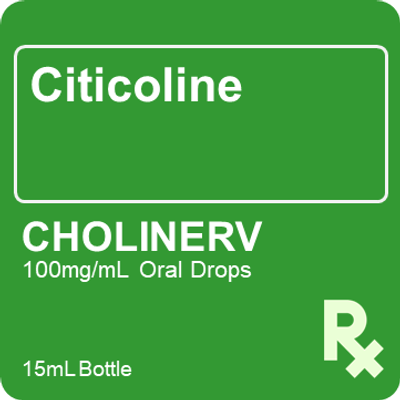
Ilosone 100mg /mL Drops 10mL
IMPORTANT NOTICE:
For this product, a doctor's prescription is required. Please do not forget to attach a copy of your valid prescription(.jpeg, bmp, gif, jpg, jpeg, jpe, jif, jfif, jfi, png, wbmp, xbm, tiff format). After you have placed your order, our pharmacist will be in touch to confirm your order and validate your prescription. Please present the original copy of your prescription upon the arrival of your order.
An item like loose capsule/tablets, ampules, vials, and refrigerated items is not subject for merchandise return or exchange upon completing the purchase.
| PRODUCT DETAILS | |
| Brand Name | Ilosone |
| Generic Name | Erythromycin (as estolate) |
| Strength | 100 mg/mL (orange-flavored) x 10 mL |
| Dosage Form | Drops |
| Class Name | Macrolides |
| Indication/Usage | Treatment of the following conditions in children and adults (culture and susceptibility testing should be done): Upper respiratory tract infections of mild to moderate severity caused by Streptococcus pyogenes, viridans group streptococci, Streptococcus pneumoniae or Haemophilus influenzae (when erythromycin is used concomitantly with adequate doses of sulfonamides, since not all strains of H. influenzae are susceptible at the erythromycin concentrations ordinarily achieved). |
| Lower respiratory tract infections of mild to moderate severity caused by S. pyogenes, S. pneumoniae, Mycoplasma pneumoniae or Legionella pneumophila. | |
| Primary syphilis caused by Treponema pallidum. Erythromycin is an alternate choice of treatment for primary syphilis in penicillin-allergic patients. In primary syphilis, spinal fluid examination should be done before treatment and as part of follow up after therapy. | |
| Diphtheriae: As an adjunct to antitoxin, to prevent establishment of carriers and to eradicate the organism in carriers. | |
| Erythrasma: In the treatment of infections due to Corynebacterium minutissimum. | |
| Intestinal amebiasis caused by Entamoeba histolytica. Extraenteric amebiasis requires treatment with other agents. | |
| Infections due to Listeria monocytogenes. | |
| Skin and soft tissue infections of mild to moderate severity caused by S. pyogenes or Staphylococcus aureus (resistant staphylococci may develop during treatment). | |
| Pertussis Caused by Bordetella pertussis: Erythromycin is effective in eliminating the organism from the nasopharynx of infected individuals, rendering them non-infectious. Some clinical studies suggests that erythromycin may be helpful in the prophylaxis of pertussis in exposed susceptible individuals. | |
| Conjunctivitis of the newborn, pneumonia of infancy and urogenital infections during pregnancy caused by Chlamydia trachomatis (see Precautions). When tetracyclines are contraindicated or not tolerated, erythromycin is indicated for the treatment of adults with uncomplicated urethral, endocervical or rectal infections due to C. trachomatis. | |
| Dosage and Administration | Children: Age, weight and severity of the infection are important factors in determining the proper dosage. The usual regimen is 30-50 mg/kg/day in divided doses. For more severe infections, this dosage may be doubled. |
| If administration is desired on a twice-a-day schedule in either adults or children, ½ of the total daily dose may be given every 12 hrs. Twice-a-day dosing is not recommended with doses >1 g daily are administered. | |
| Streptococcal Infections: For the treatment of streptococcal pharyngitis and tonsillitis, the usual dosage range is 20-50 mg/kg/day in divided doses | |
| In the treatment of group A β-hemolytic streptococcal infections, a therapeutic dosage of erythromycin should be administered for at least 10 days. | |
| In continuous prophylaxis of streptococcal infections in persons with a history of rheumatic heart disease, the dosage is 250 mg twice a day. | |
| For prophylaxis against bacterial endocarditis in penicillin allergic patients with congenital heart disease, rheumatic or other acquired valvular heart disease when undergoing dental procedures or surgical procedures of the upper respiratory tract. The dosage schedule for adults is 1 g (20 mg/kg for children) orally 1 hr before the procedure and then 500 mg (10 mg/kg for children) orally 6 hrs later. | |
| Primary Syphilis: A regimen of erythromycin estolate 20 g in divided doses over a period of 10 days has been shown to be effective in the treatment of primary syphilis. | |
| Dysenteric Amebiasis: Children: 30-50 mg/kg/day in divided doses for 10-14 days. | |
| Pertussis: Although optimum dosage and duration of treatment have not been established, dosage of erythromycin utilized in reported clinical studies was 40-50 mg/kg/day, given in divided doses for 5-14 days. | |
| Legionnaire's Disease: Although optimum doses have not been established, doses utilized in reported clinical data were those recommended (1-4 g erythromycin estolate daily in divided doses). | |
| Conjunctivitis of the Newborn Caused by C. trachomatis: Oral erythromycin suspension, 50 mg/kg/day in 4 divided doses for at least 2 weeks. | |
| Pneumonia of Infancy Caused by C. trachomatis: Although the optimum duration of therapy has not been established, the recommended therapy is oral erythromycin suspension, 50 mg/kg/day in 4 divided doses for at least 3 weeks. | |
| Warning and Precautions | Warning |
| Hepatic dysfunction with or without jaundice has occurred in adults, in association with erythromycin estolate administration. It may be accompanied by malaise, nausea, vomiting, abdominal colic and fever. In some instances, severe abdominal pain may simulate an abdominal surgical emergency. | |
| If the previous findings occur, discontinue erythromycin estolate promptly. | |
| The administration of erythromycin estolate has been associated with the infrequent occurrence of cholestatic hepatitis. Laboratory findings have been characterized by abnormal hepatic function test values, peripheral eosinophilia and leukocytosis. Hepatic dysfunction with or without jaundice has occurred, chiefly in adults, in association with erythromycin estolate. Symptoms may include malaise, nausea, vomiting, abdominal cramp and fever. Jaundice may or may not be present. In some instances, severe abdominal pain may simulate the pain of biliary colic, pancreatitis, perforated ulcer or an acute abdominal surgical problem. In other instances, clinical symptoms and results of liver function tests have resembled findings in extrahepatic obstructive jaundice. Initial symptoms have developed in some cases after a few days of treatment but generally have followed 1 or 2 weeks of continuous therapy. Symptoms reappear promptly, usually within 48 hrs after the drug is re-administered to sensitive patients. The symptoms seem to result from a form of sensitization, occur chiefly in adults and have been reversible when medication is discontinued. | |
| Pseudomembranous colitis has been reported with nearly all antibacterial agents, including erythromycin estolate and may range in severity from mild to life-threatening. Therefore, it is important to consider its diagnosis in patients who present with diarrhea subsequent to the administration of antibacterial agents. Mild cases of pseudomembranous colitis usually respond to discontinuation of the drug alone. In moderate to severe cases, appropriate measures should be taken. | |
| Rhabdomyolysis with or without renal impairment has been reported in patients receiving erythromycin concomitantly with HMG-CoA reductase inhibitors eg, lovastatin and simvastatin. Therefore, patients receiving concomitant HMG-CoA reductase inhibitors and erythromycin should be very carefully monitored for creatinine kinase (CK) and serum transaminase levels. | |
| Precautions | |
| Since erythromycin is excreted principally by the liver, caution should be exercised in administering the antibiotic to patients with impaired hepatic function. When indicated, incision and drainage or other surgical procedures should be performed in conjunction with antibiotic therapy. | |
| Carcinogenicity & Mutagenicity: 2-year oral studies conducted in rats with erythromycin did not provide evidence of tumorigenicity or mutagenicity. | |
| Use in pregnancy: Reproduction studies have been performed in rats, mice and rabbits, using erythromycin and its various salts and esters of doses several times the usual human dose. No evidence of impaired fertility or harm to the fetus that appeared to be related to erythromycin was reported in 3 studies. There are however, no adequate and well-controlled studies in pregnant women. Because animal reproductive studies are not always predictive of human response this drug should be used during pregnancy only if clearly needed. | |
| Labor and Delivery: The effect of erythromycin estolate on labor and delivery is unknown. | |
| Use in lactation: Erythromycin is excreted in human milk. Caution should be exercised when erythromycin is administered to a nursing woman. | |
| Use in children: Several reports of infantile hypertrophic pyloric stenosis have been reported in newborn infants receiving various erythromycin products, including erythromycin estolate. Erythromycin should be used cautiously in the first 3 months of life | |
| Contraindication | Patients with known hypersensitivity to erythromycin. Patients taking terfenadine, astemizole, cisapride, pimozide, verapamil or diltiazem (see Interactions). |
| Patients with known history of sensitivity to erythromycin estolate and for those with preexisting liver disease. | |
| Requires prescription? | Yes |
| Storage Conditions | Store at temperatures not exceeding 30°C. |
| Manufacturer | Interphil Laboratories Inc. |
| Regulatory Classification | Prescription Drug |

















